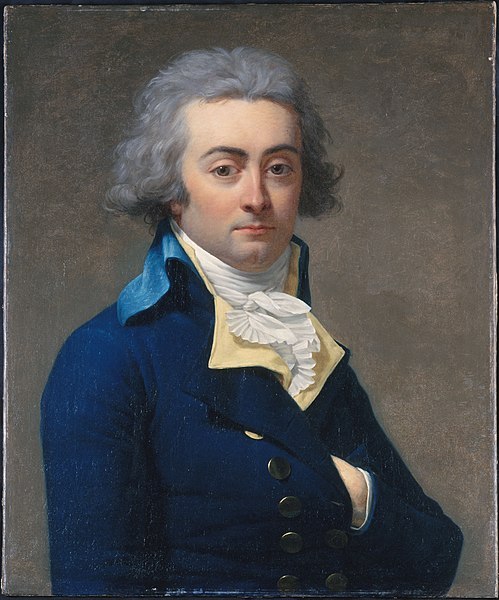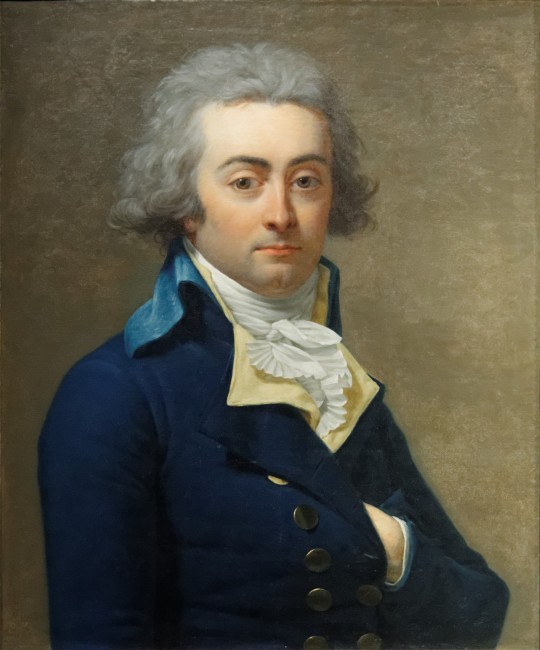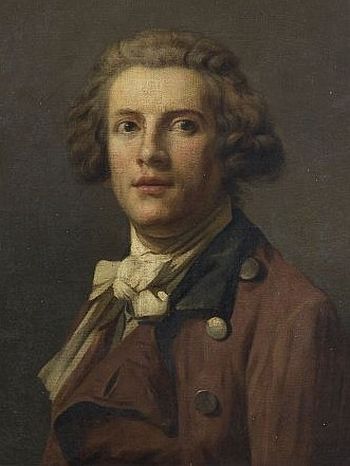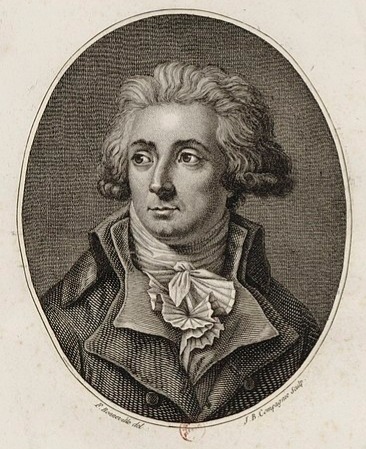#vilate
Text

my dearest friend and enemy 🩸
#zenoswol#zenos yae galvus#zenos viator galvus#dakota draws#vilat#sorry i forget to post art here. but i barely draw anyway so its okay
46 notes
·
View notes
Text
Straight men were always the enemy :3
7 notes
·
View notes
Text
moroni has gotta be the worst mormon name of all time. a lot of the others have grown on me somewhat through exposure because they no longer seem so bizarre and at least sound decent but i will never get onboard w the name moroni.
#or heber which i think sounds hideous but that's not really a mormon name it's old testament.#i'd kind of got used to vilate but then yesterday learned it is pronounced very differently from what i thought so now it's bizarre to me ag#again. i was saying VYE-lit and it's vih-LATE#*shudders*
17 notes
·
View notes
Text
for a while I only ever added to the faie pinterest board when I was having a Moment tm and it’s looking like the starscream board is going to be the same way
#it's already a disaster#the faie board is the one that's always in flux bc pinterest keeps removing stuff for vilating community guidelines
3 notes
·
View notes
Text
Happy Birthday to the most beautiful man of the 18th century[1] and the best lover in France universe[2]
[1] Vilate, Joachim, 1794
[2] de Morency, Suzanne, 1799

27 notes
·
View notes
Note
Do you think the rumors of a romance/marriage between Robespierre and Eleonore are true? Or is there any hard evidence at all?
”Hard evidence” I suppose would be statements from Robespierre and/or Éléonore themselves that the two were a thing. Such things would however appear to not exist. For Robespierre, the only time he is even recorded to have mentioned Éléonore that I’m aware of is when writing to her father while on a trip to Arras in the fall of 1791 and asking him to say hello from him to the rest of his family:
Please present the testimonies of my tender friendship to Madame Duplay, to your demoiselles, and to my little friend.
Robespierre to Maurice Duplay, October 16 1791
Present the testimonies of my tender and masterful attachment to your ladies, whom I earnestly desire to embrace, as well as our little patriot.
Robespierre to Maurice Duplay, November 17 1791
As can be seen from the letters, there’s nothing here suggesting he thought anything in particular about Éléonore. But it’s also unknown if the two were even a thing at this point, considering they hadn’t known each other for even half a year.
As for Éléonore, she hasn’t left behind any written material at all that I’m aware of, nor do we possess anything written to her. This just leaves us with contemporary claims regarding the two. Below are those I’ve been able to find, cited in chronological order:
[Robespierre’s] host's daughter passed for his wife and had a sort of empire over him.
Causes secrètes de la révolution du 9 au 10 thermidor (1794) by Joachim Vilate, page 16
It has been rumored that [Éléonore] had been Robespierre's mistress. I think I can affirm she was his wife; according to the testimony of one of my colleagues, Saint-Just had been informed of this secret marriage, which he had attended.
Mémoires d’un prêtre regicide (1829) by Simon-Edme Monnel, page 337-338
Madame Lebreton, a sweet and sensitive young woman, said, blushing: “Everyone assures that Eugénie [sic] Duplay was Robespierre’s mistress.”
“Ah! My God! Is it possible that that good and generous creature should have so degraded herself?” I was aghast.
“Listen,” cried Henriette, “don’t judge on appearances. The unhappy Eugénie was not the mistress, but the wife of the monster, whom her pure soul decorated with every virtue; they were united by a secret marriage of which Saint-Just was the witness.”
Souvernirs de 1793 et 1794 par madame Clément, Née Hémery (1832) by Albertine Clément-Hémery
Madame Duplay had three [sic] daughters: one married the conventionnel Le Bas; another married, I believe, an ex-constituent; the third, Éléonore, who preferred to be called Cornélie, and who was the eldest, was, according to what people pleased themselves to say, on the point of marrying my brother Maximilien when 9 Thermidor came. There are in regard to Éléonore Duplay two opinions: one, that that she was the mistress of Robespierre the elder; the other that she was his fiancée. I believe that these opinions are equally false; but what is certain is that Madame Duplay would have strongly desired to have my brother Maximilien for a son-in-law, and that she forget neither caresses nor seductions to make him marry her daughter. Éléonore too was very ambitious to call herself the Citizeness Robespierre, and she put into effect all that could touch Maximilien’s heart. But, overwhelmed with work and affairs as he was, entirely absorbed by his functions as a member of the Committee of Public Safety, could my older brother occupy himself with love and marriage? Was there a place in his heart for such futilities, when his heart was entirely filled with love for the patrie, when all his sentiments, all his thoughts were concentrated in a sole sentiment, in a sole thought, the happiness of the people; when, without cease fighting against the revolution’s enemies, without cease assailed by his personal enemies, his life was a perpetual combat? No, my older brother should not have, could not have amused himself to be a Celadon with Éléonore Duplay, and, I should add, such a role would not enter into his character. Besides, I can attest it, he told me twenty times that he felt nothing for Éléonore; her family’s obsessions, their importunities were more suited to make feel disgust for her than to make him love her. The Duplays could say what they wanted, but there is the exact truth. One can judge if he was disposed to unite himself to Madame Duplay’s eldest daughter by something I heard him say to Augustin:
“You should marry Éléonore.”
“My faith, no,” replied my younger brother.
Mémoires de Charlotte Robespierre sur ses deux frères (1834) page 90-91
My older sister had been promised to Robespierre.
Memoirs of Élisabeth Lebas (written around 1844)
The eldest of the Duplay daughters, who Robespierre wanted to marry, was called Éléonore. Robespierre allowed himself to be cared for, but he was not in love.
Notes historiques sur la Convention nationale, le Directoire, l’Empire et l’exil des votants (1895) by Marc Antoine Baudot, page 41
All the historians assert that [Robespierre] carried out an intrigue with the daughter of Duplay, but as the family physician and constant guest of that house I am in a position to deny this on oath. They were devoted to each other, and their marriage was arranged; but nothing of the kind alleged ever sullied their love.
Recollections of a Parisian (docteur Poumiès de La Siboutie) under six sovereigns, two revolutions, and a republic (1789-1863) (1911)
I personally believe in the version reported by Élisabeth Duplay and Joseph Souberbielle here (that is, that Robespierre and Éléonore were unofficially engaged and nothing more) since they were the ones to be in a position to actually know. The account of Charlotte Robespierre, who I suppose also was in this position, I’m dismissing due to her obvious jealousy of the Duplays. Plus, she’s done so many other shady things that lying about an engagement is honestly the least I expect from her at this point (and she lied about her own so…)
34 notes
·
View notes
Text
if you had known how i spent all that time loving you back,
would it, could it, have made a difference?
~~ vilate
59 notes
·
View notes
Note
How do you explain yanderedev purposefly vilating Nintendo's copyright by putting a Mario costume in the game???
I'm anti copyright. Also, fair use.
18 notes
·
View notes
Note
Do you know what the primary source was for Camille fainting? I know I’ve read about it, but can’t remember the original reference anymore. Love the chart, btw ❤️
I read about it in choosing terror

Apparently the primary source is Vilate
51 notes
·
View notes
Text



my warrior of light Vilat + some wip sketches
21 notes
·
View notes
Text
Names generated from Italian cities, Roman places/ruins and Bulgarian forenames, excluding the letter "H"
Acefka Acquil Agomil Albil Alenza Alessa Aletan Aletorea Aliudmila Alium Aliumer Amulava Anfrum Anikon Anium Annay Anova Aplegna Aplena Apris Aquae Aquasta Aquil Argamena Ariandini Aricelinum Arilav Arovista Asilizana Aspenka Atorda Aviglium Aviguna...
Baskeva Bastanka Batabana Beiacentis Belyanice Bevine Biianova Biliia Blabra Blandum Blangaray Blavara Bobanna Bogna Bognanka Bogniaes Bojida Bojidano Bojidelina Boliyasta Bomirocon Boncas Bonko Boran Borealiy Boria Borleka Borni Bortiva Boykoslada Bozdariana Bradistina Bradrista Braeala Bramuccin Bridana Brina Brisla Brulota Brulum Bulausa Bulava Bulogda Cafae Cafrea Calavar Calesta Calia Calium Calta Camento Camulagona Canium Caramir Caria Carto Cassabia Castertua Cateia Cereggia Ciandurino Clava Cloromitur Colan Conga Congus Conis Conto Corigli Corno Corum Cosla Cresseria Crium Cromonsca Culactiva Culuna Cunuena Daleksa Dandra Dania Darislamna Dattina Denete Denuelen Denzana Derto Disto Domia Dorgila Dosen Driassa Drina Dubrislav Dunelina Duria Duril Durivko Durna Ebeliyanka Ebenaeva Elina Elleortin Elletana Ellueva Ellunisua Emiliglia Emilvigo Emira Entonto Eragomin Erealienum Ermonia Eteria Etoia Evaynatas Eviocola Faltan Fandanka Fanevan Fanium Fanka Fantupia Fatavio Fatemiri Febelato Fercon Feria Feryx Fidalis Fogda Fogno Fonna Fonto Fordena Forgia Foriso Gabas Galae Galtan Gamodeja Gamucenka Garan Gareggium Garra Garrana Geliian Gella Genzislae Geonna Gevellora Grinum Grivigen Groslava Grotanka Grotoia Grovida Iacia Ieremon Igerea Igliani Ilagli Ilenellon Imilla Imillinaia Inuen Ireza Islav Ispan Istorum Iumir Ivara Ivigno Ivkolix Ivola Ivonavium Ivoncon Ivora Ivorkalù Ivrifolia Jorka Jortium Kalen Kazdra Kimvigna Kiradko Kiras Kiratei Krava Kritur Ladiacafra Lagna Larislav Lavaliza Lavreata Lenapota Lerno Letko Lianoria Liume Ljubelium Ljubraev Lodinae Lodna Lognyilio Lonia Lonika Lonstium Lordana Lubena Luces Luelium Luelix Luntelayna Lunum Luslar Lyana Macas Macellum Maglii Magorota Maliyan Marento Marina Maruttium Maspaste Materran Mesav Milamir Millavons Mlaro Molina Momir Mongeona Moniae Montia Mytimonav Mytineva Naceren Nadimir Nadko Naiandrea Navko Nederister Netanovio Nonka Norae Noruelabil Ogdae Oggil Ognisla Ognovia Olergio Padelin Padurote Palbissen Pandica Panka Paranolia Paria Paronka Passaen Pavaronka Pavilagio Pavko Peden Pedenum Perescium Perrae Petavris Petes Petoia Petum Pezzo Piagnovio Pislae Pison Poban Pobbia Polla Pomarana Pomir Pomoncae Ponti Pontia Ponum Pornicia Porno Porto Potamons Potan Potona Prayna Prifor Radimir Radris Raglia Ragna Raman Ranimili Rapar Rarpio Ratium Razko Realeni Rebetria Reggia Regnae Remnaterad Ressimon Revisla Rinia Roduas Roman Rovin Ruglium Rurna Ruron Rurotanum Sabeliiae Sabis Sandur Saneveta Sanka Sanoa Sarsa Savarezio Scamonfrum Sciaes Selegossa Selia Selinia Sentici Sessavii Simalium Sistasta Stalia Stana Stanicira Starian Steccium Stinum Stiur Stonkazko Sveta Tanza Tarlegunum Tasilia Tefka Teradezzia Terili Terno Teryx Tonika Tradossa Traeva Treggium Tressepia Triana Trignya Trurieta Tzabaregna Tzimir Tzves Tzvetana Udmillagno Udmir Udmiraca Varino Varmo Varraenza Veceno Vellegnyan Velluen Velogni Venia Venista Venolbei Venoleggi Venticiva Ventodina Venza Veria Versana Vertoia Vesaben Vessarti Vetanika Vetlago Vetticia Vetum Vianka Vicaroum Viccase Vignyazm Vilate Visilia Vispav Vlagun Yanka Yanko Yarpissa Yazko Yorbatrio Yubremo Zdastabio Zlabri Zlangene Zlanka Zlatinedas Zorissimon
#444 names#444names#fantasy names#name stash#dnd names#fantasy name#names#markovgen#character names#markov gen#random fantasy names
2 notes
·
View notes
Text
my name nerd white whales are rulon and vilate...every day i wake up and wonder where those came from
#i know WHO they came from bc i can find the first rulon and the first vilate that kicked off these mormon name trends#but i don't know what caused their parents to come up with the name. perhaps we shall never know#rulon FEELS like it's probably a roland variant spelling to me but who knows
7 notes
·
View notes
Text



Happy birthday to the most beautiful man of the 18th century!
(According to Joachim Sempronius Vilate)
Marie-Jean Hérault de Séchelles was (most probably) born on 20th October 1759.
I say "most probably", because his baptism record is lost, which is not a rarity for Paris records. I know French wiki gives a different date and English wiki yet another, but there are no sources to confirm those. On the other hand, 20th October is mentioned in older Hérault bios, so I do believe it is the most reliable date for his brithday.
So, let's do what he would have wanted and enjoy ourselves to the fullest today! 😎🥰😊
43 notes
·
View notes
Text
Robespierre’s dubious girlfriends compilation
Marie Catherine Antoinette ”Anaïs” Deshorties
My brother’s amiability with women captivated their affection. Some of them, I believe, felt more than an ordinary sentiment for him. One among others, Mademoiselle Deshorties, loved him, and was loved in return. The father of this young person had taken for his second wife one of our aunts; from his first marriage he had two sons and three daughters. When my brother was elected deputy to the Estates-General, he had courted Mademoiselle Deshorties for two or three years. Many times already the question of marriage had come up, and very probably Maximilien would have married her, if the suffrage of his fellow citizens had not removed him from the sweetness of private life and thrown him into a career in politics. Mademoiselle Deshorties, who had sworn to him that she would ever belong only to him, took no account of this oath, and, during the session of the Constituent Assembly, gave her hand to another. My brother learned of this betrayal only upon his return to Arras, after the closing of the Assembly; he was very grievously affected.
Mémoires de Charlotte Robespierre sur ses deux frères (1834) page 58-59. Anaïs got married to the lawyer Léandre Leducq on August 7 1792.
Unknown woman
As for [Robespierre’s] continence, I only knew of a woman of about twenty-six years, whom he treated rather badly, and who idolized him. Very often he refused her at his door; he gave her a quarter of his fees.
Souvernirs d’un déporté (1802) by Paul Villiers, who claimed to have served as Robespierre’s secretary for a few months 1790-1791.
Adélaïde ”Adèle” Duplessis (1774-1863)
Robespierre, if you still remember our evenings of intimacy, if you remember the caresses you lavished on little Horace, that you delighted to hold him upon your knee, and if you remember that you were to have been my son-in-law, spare an innocent victim!
Adèle’s mother Annette in letter to Robespierre, seemingly written April 13 1794, begging him to save Adèle’s sister Lucile Desmoulins. In Camille et Lucile Desmoulins — un rêve de république (2019), the authenticity of this letter gets questioned, considering its tone and content are so different compared to the one Annette wrote to Robespierre a few hours earlier. Annette also calls Robespierre ”a tiger with a human face” in it, an expression popularized after thermidor. However, if it’s true that it is apocryptical, it should be remembered that the documents among which the letter was published were in a private collection, resting under the authority of first Annette, who Adèle lived with until her death in 1835, and then Marcellin Matton, who was given the documents right before Annette’s death, promising to publish ”those that may present any historical interest,” and who Adèle then moved in with. It is in other words hard to see this letter getting forged and snuck in with the rest without Adèle being aware of it and giving her consent to being made into the would be wife of one of the people responsible for her sister’s death… Something I’m having a hard time understanding why either Annette, Matton or Adèle herself would want to pretend to be the case. I suppose it’s possible for Lucile to be the person the letter is alluding to as well, but that’s a bit too wild…
Éléonore ”Cornélie” Duplay (1768-1832) .
[Robespierre’s] host's daughter passed for his wife and had a sort of empire over him.
Causes secrètes de la révolution du 9 au 10 thermidor (1794) by Joachim Vilate, page 16
It has been rumored that this daughter [Éléonore] had been Robespierre's mistress. I think I can affirm she was his wife; according to the testimony of one of my colleagues, Saint-Just had been informed of this secret marriage, which he had attended.
Mémoires d’un prêtre regicide (1829) by Simon-Edme Monnel, page 337-338
Madame Lebreton, a sweet and sensitive young woman, said, blushing: “Everyone assures that Eugénie [sic] Duplay was Robespierre’s mistress.”
“Ah! My God! Is it possible that that good and generous creature should have so degraded herself?” I was aghast.
“Listen,” cried Henriette, “don’t judge on appearances. The unhappy Eugénie was not the mistress, but the wife of the monster, whom her pure soul decorated with every virtue; they were united by a secret marriage of which Saint-Just was the witness.”
Souvernirs de 1793 et 1794 par madame Clément, Née Hémery (1832) by Albertine Clément-Hémery
Madame Duplay had three [sic] daughters: one married the conventionnel Le Bas; another married, I believe, an ex-constituent; the third, Éléonore, who preferred to be called Cornélie, and who was the eldest, was, according to what people pleased themselves to say, on the point of marrying my brother Maximilien when 9 Thermidor came. There are in regard to Éléonore Duplay two opinions: one, that that she was the mistress of Robespierre the elder; the other that she was his fiancée. I believe that these opinions are equally false; but what is certain is that Madame Duplay would have strongly desired to have my brother Maximilien for a son-in-law, and that she forget neither caresses nor seductions to make him marry her daughter. Éléonore too was very ambitious to call herself the Citizeness Robespierre, and she put into effect all that could touch Maximilien’s heart. But, overwhelmed with work and affairs as he was, entirely absorbed by his functions as a member of the Committee of Public Safety, could my older brother occupy himself with love and marriage? Was there a place in his heart for such futilities, when his heart was entirely filled with love for the patrie, when all his sentiments, all his thoughts were concentrated in a sole sentiment, in a sole thought, the happiness of the people; when, without cease fighting against the revolution’s enemies, without cease assailed by his personal enemies, his life was a perpetual combat? No, my older brother should not have, could not have amused himself to be a Celadon with Éléonore Duplay, and, I should add, such a role would not enter into his character. Besides, I can attest it, he told me twenty times that he felt nothing for Éléonore; her family’s obsessions, their importunities were more suited to make feel disgust for her than to make him love her. The Duplays could say what they wanted, but there is the exact truth. One can judge if he was disposed to unite himself to Madame Duplay’s eldest daughter by something I heard him say to Augustin:
“You should marry Éléonore.”
“My faith, no,” replied my younger brother.
Mémoires de Charlotte Robespierre sur ses deux frères (1834) page 90-91
My older sister had been promised to Robespierre.
Memoirs of Élisabeth Lebas (written around 1844)
The eldest of the Duplay daughters, who Robespierre wanted to marry, was called Éléonore. Robespierre allowed himself to be cared for, but he was not in love.
Notes historiques sur la Convention nationale, le Directoire, l’Empire et l’exil des votants (1895) by Marc Antoine Baudot, page 41
All the historians assert that [Robespierre] carried out an intrigue with the daughter of Duplay, but as the family physician and constant guest of that house I am in a position to deny this on oath. They were devoted to each other, and their marriage was arranged; but nothing of the kind alleged ever sullied their love.
Recollections of a Parisian (docteur Poumiès de La Siboutie) under six sovereigns, two revolutions, and a republic (1789-1863) (1911)
#robespierre had a thing for girls with nicknames it seems…#robespierre#maximilien robespierre#frev#frev compilation#éléonore duplay#that adèle-robespierre story seriously haunts me#i need to know what was actually the case! 😫
51 notes
·
View notes
Text
i said i loved you to death
and now look how i lay still in my tomb
see how you suffocated me
feel my limbs, cold and numb.
~~ vilate
#spilled poetry#poets on tumblr#poets corner#poet#poetry#original writing#poetscommunity#poetsandwriters#romantic academia#love#spilled love#love poetry#poetscorner#loss#morning#lost love
26 notes
·
View notes
Text
De totalitära rörelsernas framgångar bland massorna innebar slutet för två illusioner om demokratiskt styrda länder i allmänhet och om europeiska nationalstater och deras partisystem i synnerhet. Den första illusionen var att folkets majoritet hade tagit aktiv del i det politiska styret och att varje individ sympatiserade med ens eget eller någon annans parti. Vad rörelserna visade var att de politiskt neutrala och likgiltiga massorna tvärtom kunde utgöra majoriteten i ett demokratiskt styrt land, och att demokrati därför kunde fungera i enlighet med regler som var aktivt erkända endast av en minoritet. Den andra demokratiska illusion som skingrades av de totalitära rörelserna var att dessa politiskt likgiltiga massor inte hade någon betydelse, att de var genuint neutrala och bara utgjorde en oartikulerad, underutvecklad bakgrund till nationens politiska liv. Nu uppenbarade de något som inget annat organ för den allmänna opinionen någonsin hade lyckats visa, nämligen att det demokratiska styret hade vilat lika mycket på tyst samtycke och tolerans bland folkets likgiltiga och oartikulerade skikt som på landets välartikulerade, synliga institutioner och organisationer.
Hannah Arendt, Totalitarismens ursprung
0 notes